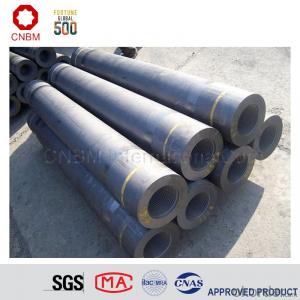When it comes to the world of manufacturing, precision and efficiency are key. And when you’re dealing with something as crucial as graphite electrode machining, these two factors become even more important. But let’s not get too bogged down in the technicalities. Instead, let’s dive into the heart of the matter and explore the passion, the dedication, and the sheer excitement that goes into this process.
Graphite electrode machining is an art form in itself. It’s not just about cutting and shaping a piece of graphite into the desired form. It’s about understanding the material, respecting its properties, and working with it to create something truly exceptional. This is where the skill of the machinist comes into play. With years of experience and a keen eye for detail, they can transform a simple block of graphite into a masterpiece of precision engineering.
But what exactly is graphite electrode machining, and why is it so important? Well, graphite electrodes are used in a variety of applications, from electric arc furnaces to plasma cutting torches. They’re essential for melting and shaping metals, and for cutting through tough materials with ease. The quality of the machining process directly impacts the performance of these electrodes, making it a critical aspect of the manufacturing industry.
Now, let’s talk about precision. Precision in graphite electrode machining means being able to create parts with exact dimensions and tolerances. This ensures that the electrodes fit perfectly into their intended applications, without any need for further adjustments or modifications. It’s a delicate balance between cutting too much and not enough, and it requires a level of expertise that can only be achieved through years of practice and dedication.
Efficiency, on the other hand, is all about getting the job done quickly and effectively. In a fast-paced industry like manufacturing, time is of the essence. The faster a machinist can produce high-quality graphite electrodes, the more competitive they are in the market. This is where advanced machinery and cutting-edge techniques come into play, allowing for faster production times and reduced waste.
But it’s not just about the machines. The human element is equally important. A skilled machinist can read the nuances of the graphite, understanding when to push and when to pull back. They can adapt to changing conditions and make split-second decisions that can mean the difference between a successful machining process and a costly mistake.
So, what does it take to achieve precision and efficiency in graphite electrode machining? First and foremost, it requires a deep understanding of the material itself. Graphite is a unique substance with a range of properties that can be both a blessing and a challenge. It’s soft and easy to work with, but it’s also prone to breaking and chipping if not handled correctly.
Next, it’s essential to have the right tools and equipment. High-quality cutting tools, precision measuring instruments, and state-of-the-art machining centers are all crucial for achieving the desired results. Investing in the best equipment may seem like a big upfront cost, but it pays off in the long run by ensuring consistent quality and reducing the likelihood of errors.
Training and experience are also vital. A machinist who has spent years honing their craft will have a better understanding of the nuances involved in graphite electrode machining. They’ll know how to work with the material, how to read the machines, and how to troubleshoot any issues that may arise. This level of expertise is invaluable in achieving both precision and efficiency.
But let’s not forget about the emotional aspect of this process. There’s a certain satisfaction that comes from creating something with your own two hands, from taking a raw material and transforming it into a finely crafted piece. It’s a feeling of accomplishment, of pride in one’s work, that drives many machinists to strive for excellence in their craft.
In conclusion, graphite electrode machining is a complex and fascinating process that requires a combination of skill, knowledge, and passion. It’s about pushing the boundaries of what’s possible, about achieving perfection in a world that often seems far from perfect. So, the next time you come across a graphite electrode, remember the dedication and expertise that went into creating it, and appreciate the art and science behind this incredible manufacturing process.

